#20: Use Unsympathetic Characters Effectively
Last week, I wrote about how to create sympathetic characters, and why they are so useful. To make your characters unsympathetic, you often use the reverse techniques.
Here are some of the major techniques which create unsympathetic characters:
- Give the character unrelatable motives and actions.
- Give the character an unrelatable perspective (in the case of a non-viewpoint character, sometimes the things that form the character’s perspective—their background and their situation—are unknown to the reader, which makes it more likely that we will perceive the character and their choices as unsympathetic).
- Have the character act in unlikeable ways.
- Further, have the character be cruel, unkind, or selfish. Have them hurt others (we especially dislike when characters hurt a character, animal, or thing that we care about as readers).
- Make the character too perfect or too imperfect (or too miserable in their circumstances).
- Have the character not learn from their mistakes and forgo opportunities to improve.
- Make the character not self-aware.
Emma (in Jane Austen’s novel of the same title) is a great example of an effective unsympathetic character. It is challenging to write an unsympathetic main character who routinely takes actions that the reader disagrees with—yet Austen has done so in a way that keeps us engaged and even rooting for Emma.
Gif of Emma from the 2020 film
The techniques Austen uses are useful whether you’re writing an unsympathetic protagonist, antagonist, or supporting character, and they are also useful if you are making a largely sympathetic character unsympathetic for a portion of the story.
Unsympathetic Character Feature: Emma
Emma is Jane Austen’s only heroine that is truly, undeniably rich. At the beginning of the novel, her governess marries, and she is left alone with her father. She befriends Harriet Smith and tries to teach her to be more refined.
Yet Harriet is in love with a Mr. Martin, and even though he is respectable and owns his own land and could make Harriet happy, Emma is opposed to the match, and she justifies this opposition by claiming that Mr. Martin is beneath Harriet in status (however, as Mr. Knightley points out, this is not actually the case).
As Harriet and Emma are walking one day, they see Mr. Martin, and Harriet speaks with him briefly. After, an excited Harriet asks Emma:
“Well, Miss Woodhouse, is he like what you expected? What do you think of him? Do you think him so very plain?”
“He is very plain, undoubtedly—remarkably plain:—but that is nothing, compared with his entire want of gentility. I had no right to expect much, and I did not expect much; but I had no idea that he could be so very clownish, so totally without air. I had imagined him, I confess, a degree or two nearer gentility.”
“To be sure,” said Harriet, in a mortified voice, “he is not so genteel as a real gentleman.”
Emma’s words hurt Harriet, but because Emma is highborn and sophisticated and well-spoken, Harriet does not protest. A few chapters later, Mr. Martin proposes (via letter) to Harriet, and Emma convinces Harriet to turn him down (though she does it in a way that forces Harriet to make the decision as if on her own). These are unsympathetic actions which derive from faulty judgement and selfish motives (wanting to keep Harriet to herself). Though we understand Emma’s perspective, we are not meant to relate to it, and instead, we latch on to Mr. Knightley’s criticism of Emma’s behavior.
Note: A key to writing an unsympathetic character is that this character must believe that their motives and actions are good/necessary/justified. In Emma’s mind, she is doing what is best for Harriet and saving her friend.
Emma’s Redeeming Qualities
Though Emma consistently does unsympathetic things, we keep reading because of her redeeming qualities:
- She is witty and intelligent
- She can be humorous (and the narrator is particularly funny)
- In general, the people in her community like her
- She is active and engaging
All of these redeeming qualities give us some level of sympathy for Emma, which brings me to my next point: unsympathetic characters should still have sympathetic qualities.
Even though her judgment can be faulty and her actions unkind, sometimes she has better judgment and shows a stronger awareness of the needs and desires of others. For instance, Emma’s father hates marriage and is upset that Miss Taylor has become Mrs. Weston:
Poor Miss Taylor!—I wish she were here again. What a pity it is that Mr. Weston ever thought of her!”
“I cannot agree with you, papa; you know I cannot. Mr. Weston is such a good-humoured, pleasant, excellent man, that he thoroughly deserves a good wife;–and you would not have had Miss Taylor live with us for ever and bear all my odd humours, when she might have a house of her own?”
We can become invested in unsympathetic characters when they are more sympathetic (in one or more areas) than their fellow characters.
Emma’s Self-Awareness
If Emma was completely self-aware, she would realize the full, sometimes terrible consequences of her actions.
Yet she shows a certain level of self-awareness. This can be seen as she talks about, thinks about, and interacts with Jane Fairfax, a long-time acquittance who has come to stay in Highbury. Here’s an excerpt from a rather lengthy passage (bolding is my own):
Emma was sorry;—to have to pay civilities to a person she did not like through three long months!—to be always doing more than she wished, and less than she ought! Why she did not like Jane Fairfax might be a difficult question to answer; Mr. Knightley had once told her it was because she saw in her the really accomplished young woman, which she wanted to be thought herself; and though the accusation had been eagerly refuted at the time, there were moments of self-examination in which her conscience could not quite acquit her. But “she could never get acquainted with her: she did not know how it was, but there was such coldness and reserve—such apparent indifference whether she pleased or not—and then, her aunt was such an eternal talker!—and she was made such a fuss with by every body!—and it had been always imagined that they were to be so intimate—because their ages were the same, every body had supposed they must be so fond of each other.” These were her reasons—she had no better.
It was a dislike so little just—every imputed fault was so magnified by fancy, that she never saw Jane Fairfax the first time after any considerable absence, without feeling that she had injured her; and now, when the due visit was paid, on her arrival, after a two years’ interval, she was particularly struck with the very appearance and manners, which for those two whole years she had been depreciating. Jane Fairfax was very elegant, remarkably elegant; and she had herself the highest value for elegance.
Emma is aware of her own unfairness, and she is aware that her “dislike [is] so little just.” Yet as the scene progresses, she continues to justify her negative behavior and actions towards Jane based on perceived faults:
She was, besides, which was the worst of all, so cold, so cautious! There was no getting at her real opinion. Wrapt up in a cloak of politeness, she seemed determined to hazard nothing. She was disgustingly, was suspiciously reserved.
Even though we cannot completely condone Emma’s behavior and attitude, she does become more sympathetic as we are immersed in her perspective.
Reasons to Create an Unsympathetic Character
There are many reasons that you might want to create an unsympathetic character:
- To make it clear that the narrator (and/or the author) does not agree with or condone the character’s actions and behavior. (If this is one of the goals, it’s often useful to have a character like Mr. Knightley in Emma who criticizes or calls the character out on their behavior.)
- It’s a powerful way to create tension, drama, and conflict.
- Controlling and shifting the reader’s sympathies can create a powerful emotional reaction for the reader.
- Humans do unsympathetic things all the time, and it’s interesting and compelling to explore this aspect of humanity in literature.
- An unsympathetic main character has a greater potential to grow and change.
- For characters that are largely sympathetic, having scenes where they are unsympathetic can create contrast with and help build to key scenes where the character makes admirable, sympathetic choices that we can really root for (the cartoonist Howard Tayler talks about these as “stand up and cheer” moments).
Emma’s internal journey is about her rethinking her place in the community and learning to be kinder and let others choose what is best for themselves. She shows tremendous growth over the novel, and it’s largely made possible through her being an unsympathetic character.
Exercise 1: Who is your favorite unsympathetic character? This could be a protagonist, an antagonist, or a supporting character. Why are they unsympathetic? And why do you like them?
Exercise 2: Take a classic fairy tale character that is generally sympathetic (i.e. Cinderella). Write a scene which makes this character unsympathetic to the reader. Remember to temper the character and give them some redeeming or positive qualities.
Exercise 3: Different techniques for unsympathetic characters can create very different effects. Take one of your characters—this could be a new or an existing character. Now choose three of the following techniques you could use to make them unsympathetic:
- Give the character unrelatable motives and actions.
- Give the character an unrelatable perspective.
- Have the character act in unlikeable ways.
- Further, have the character be cruel, unkind, or selfish. Have them hurt others (we especially dislike when characters hurt a character, animal, or thing that we care about as readers).
- Make the character too perfect or too imperfect (or too miserable in their circumstances).
- Have the character not learn from their mistakes and forgo opportunities to improve.
- Make the character not self-aware.
For each technique you choose, brainstorm a scene that could use this technique to make the character unsympathetic. (If you’d like to take it one step farther, you can write these scenes.)

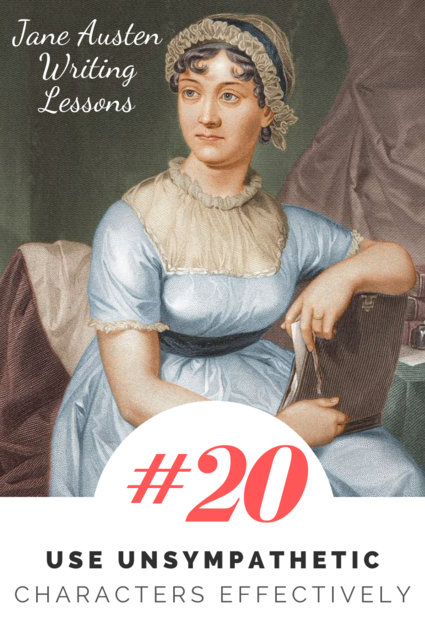




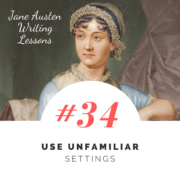
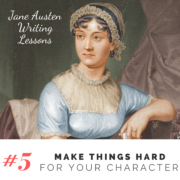
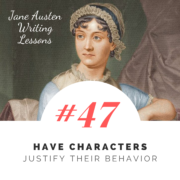
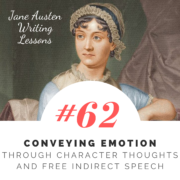
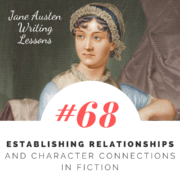
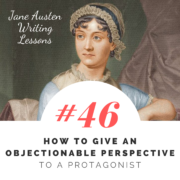


Leave a Reply
Want to join the discussion?Feel free to contribute!